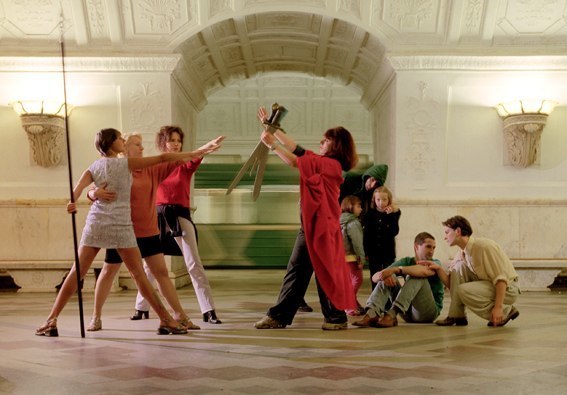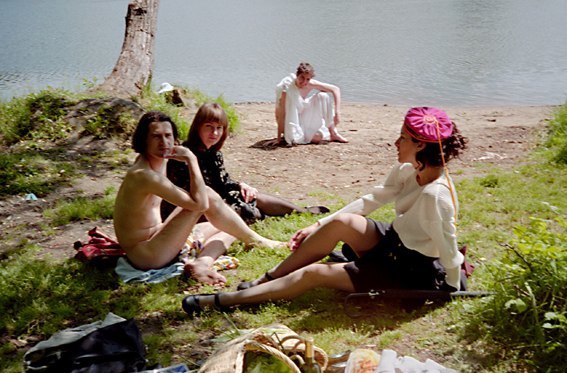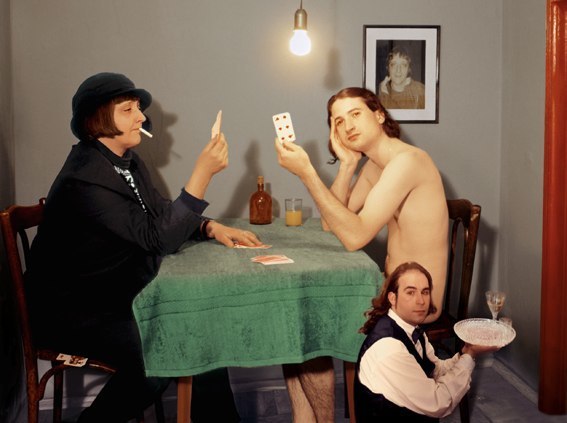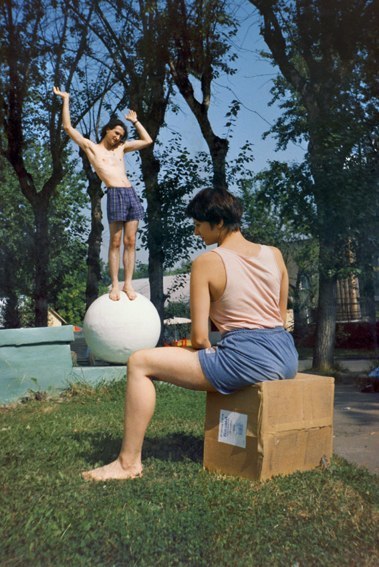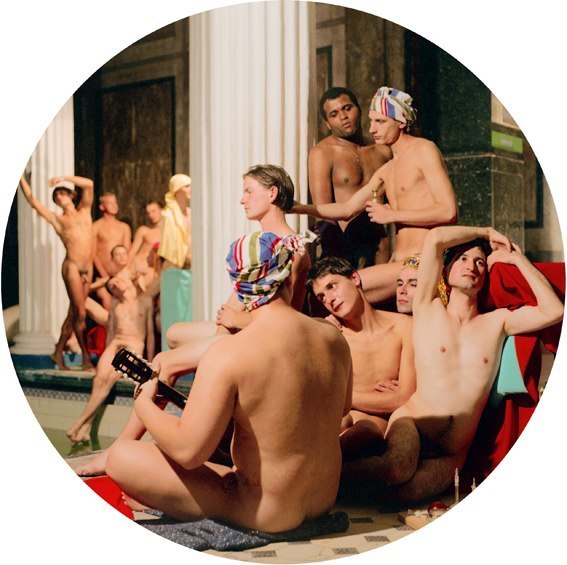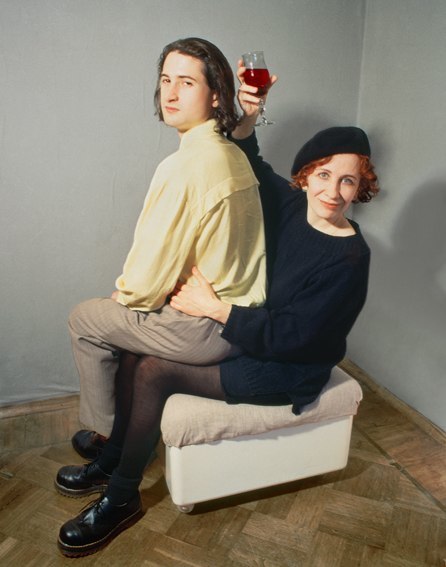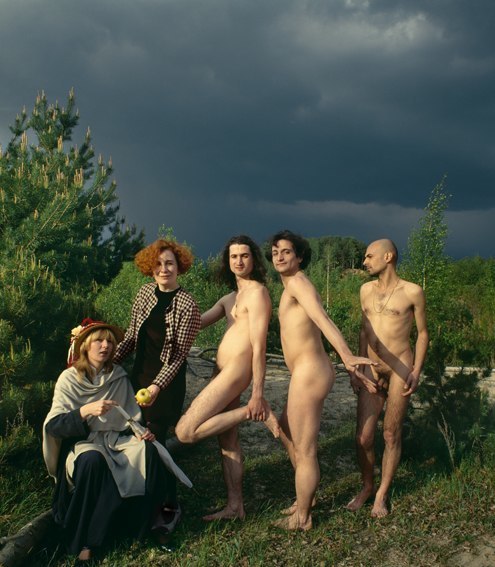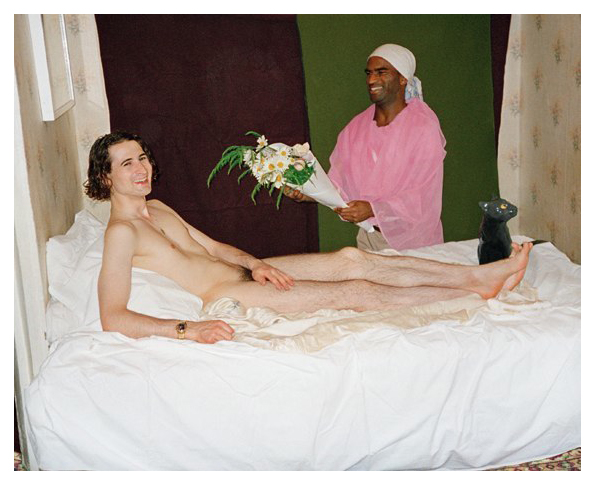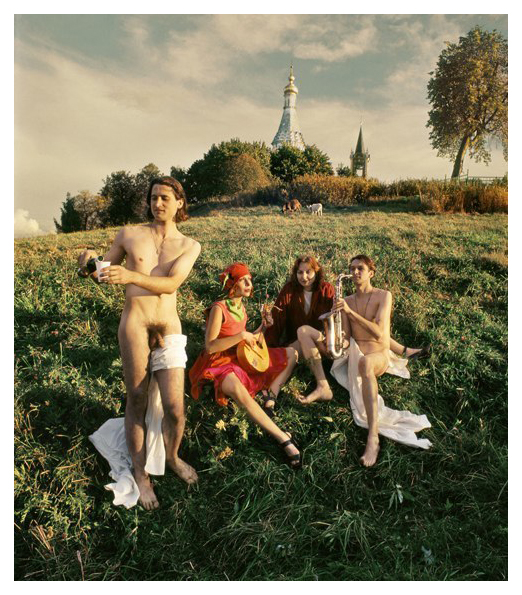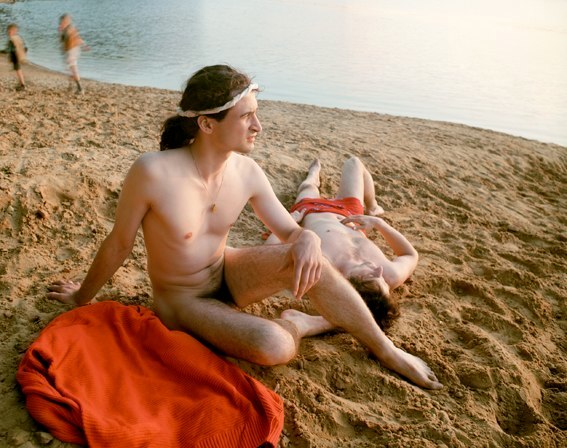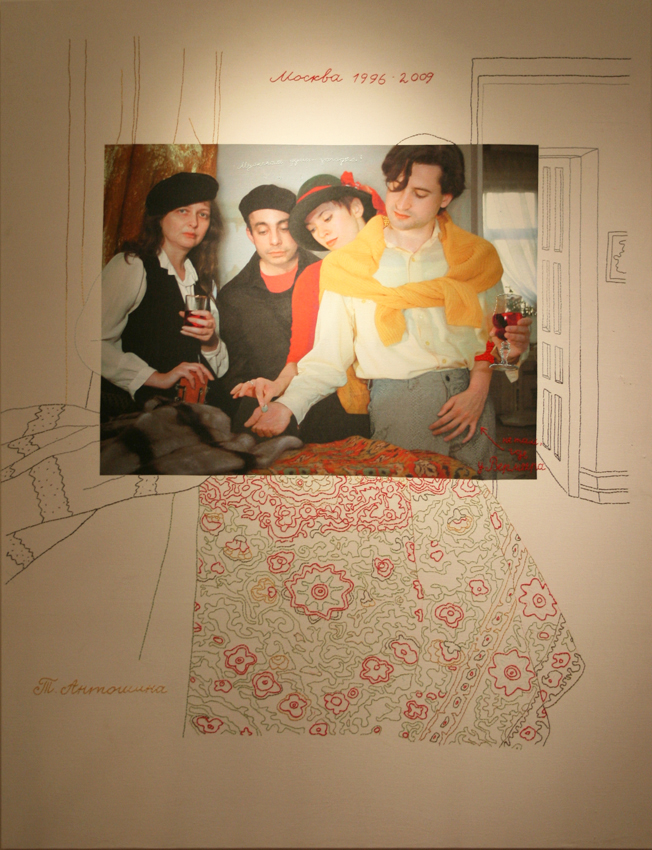Museum of a woman
REVIEWS
LONDON
TATIANA ANTOSHINA: THE MUSEUM OF A WOMAN
White Space Gallery
18 Match — 7April
In Oscar Wilde’s bizarre biblical travesty Salome — a play that borrows its somewhat sickly grandeur from the paintings of Gustave Moreau — the lethal dancer of the title is an odd absence at the centre of the stage, all her palpably seductive presence displaced, in Wilde’s text, onto the figure of John the Baptist. In a perverse traducing of expectations (a reversal worthy of the photographs of Tatiana Antoshina), it is the saint’s body that is erotically anatomised, transformed into a carnal amalgam of dark hair, white skin and full-bloodedly kissable lips. The reversal is both comic and fatal: an erotic delirium punishable, for prophet and princess alike, by death.
Salome may be missing from Antoshina’s cross-gendered photographic restagings of selected Old Masters, but yon can imagine the devious fun she might have with such a subject. Francesca Piovano’s accompanying essay claims these works for a putative ‘feminist baroque’; it might be more accurate to say that they invent a feminist decadence.
In his Decadence of the Nude, Pierre Klossowski wrote: ‘the profaner’s gaze upon the female body contained the primitive violence of which the painting is only the simulacrum’. At one level, The Museum of a Woman, with its substitution of male nudes for female in photographic replicas of paintings by the likes of Ingres, David and Manet, risks merely rehearsing the contemporary overfamiliarity of such an observation. The straightforward reversal of genders in Lunch on the Grass seems, actually, no more inherently disruptive than the simple statement that the scenography of Manet’s original is a matter of the male gaze, the intersection of various misogynist optics, painterly and historical. At the same time, the strategy skills a certain ahistorical banality, as if the nudes of Ingres’ The Turkish Bath were the same as that of Manet’s Olyrnpia, subject to an identical photographic detournement.
But the nudes in Antoshina’s photographs are more complicatedly seductive than a précis of her method might suggest. The arrangement and iconography of Manet’s lunch party may be intact, and the upending of gender roles the first thing you notice, but it’s the tangibility of detail that gives the image its novel air of renewed perversity. The male nude in the foreground, and his half-dressed counterpart who advances awkwardly, giddily from the water’s edge (is that his hat abandoned in the bushes, or an item of more intimate apparel?), seem to have been happily caught up in some erotic scenario distinctly more kinky than in the original painting, with its merely scandalous nudity. It is not a matter here of simply refracting the lines of sight and power that traverse the painting, but of a playful conspiracy between the voyeur and the object. In Antoshina’s Olympus, the prone nude and attendant flower-bearer are both giggling at the whole amateur-theatrical campery of the set-up; the naked man’s gold watch is a glinting reminder of the scene’s artifice.
It’s this sort of comic detail which perturbs The Museum of a Woman from the orbit of conventional gender reversal into a more elliptical arc. In The Turkish Bath, the belly of the figure in the foreground, with his back to the camera, protrudes with precisely the same happy flabbiness as that of the corresponding woman in Ingres’ painting, while all about him more sculpted bodies pose and preen. Wilde’s biographer Richard Ellman was once deluded into reproducing a photograph of a podgy half-nude woman as a genuine snapshot of the author in the role of Salome. Antoshina’s meticulously staged photographs cannot help but frame a similar fleshly ambiguity, a sense that the bodies in both photograph and painting are no longer as rigid as they seem. BD
Tatiana Antoshina, Turkish Bath, 1997, C-print, 124.7 cm x 99.7 cm. Courtesy White Space Gallery.
120 MODERN PAINTERS / SUMMER 2004
&ncopy; Tania Antoshina 1990 — 2012
